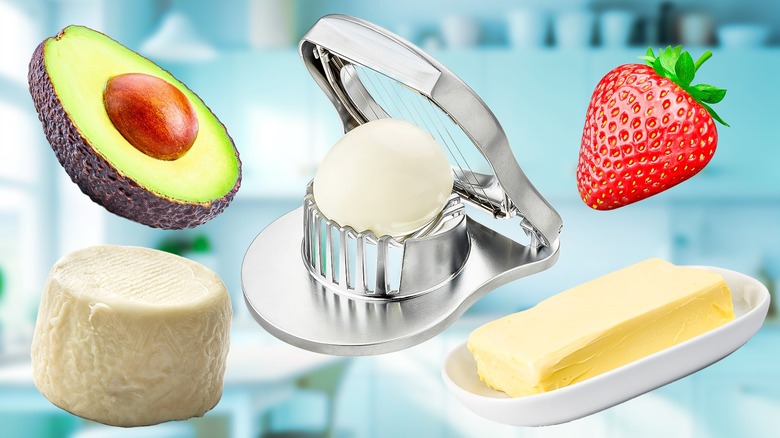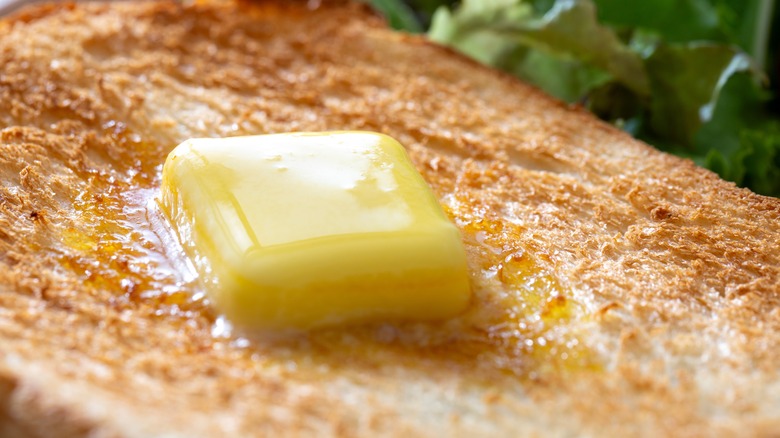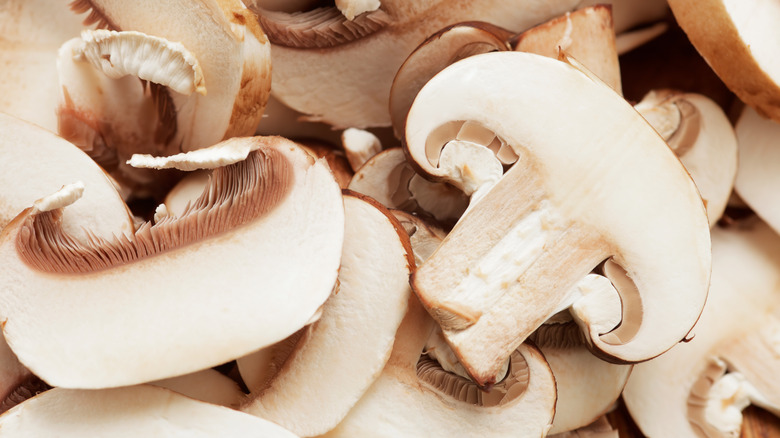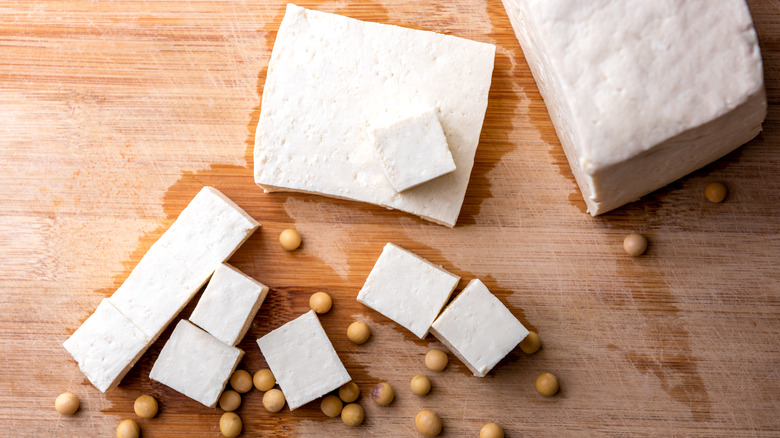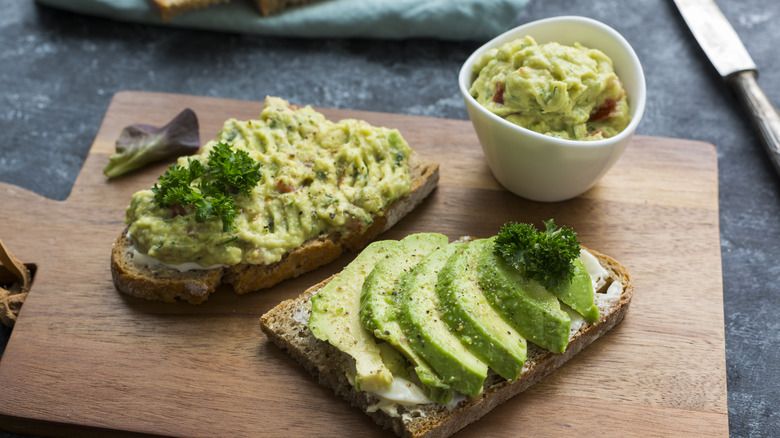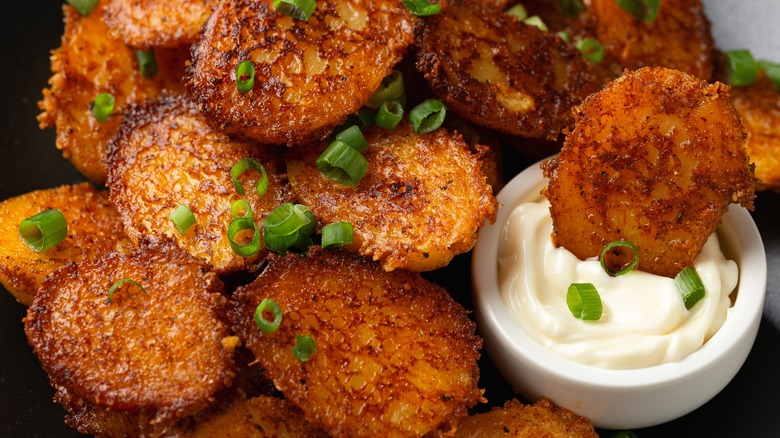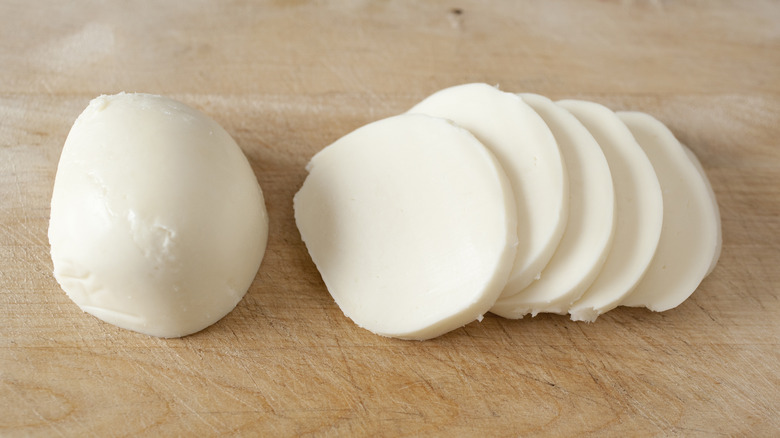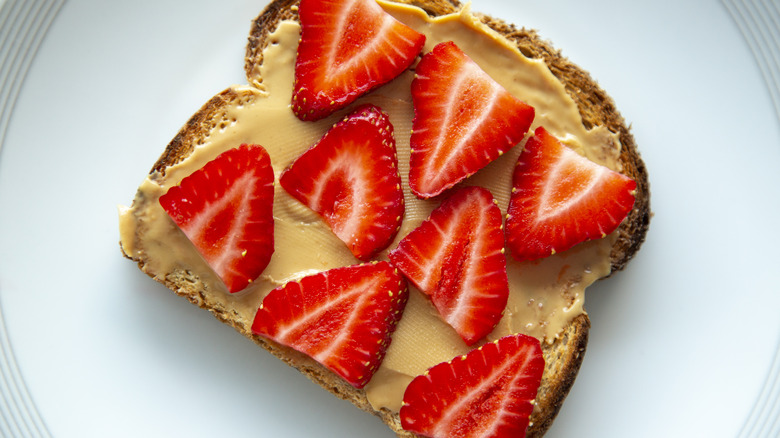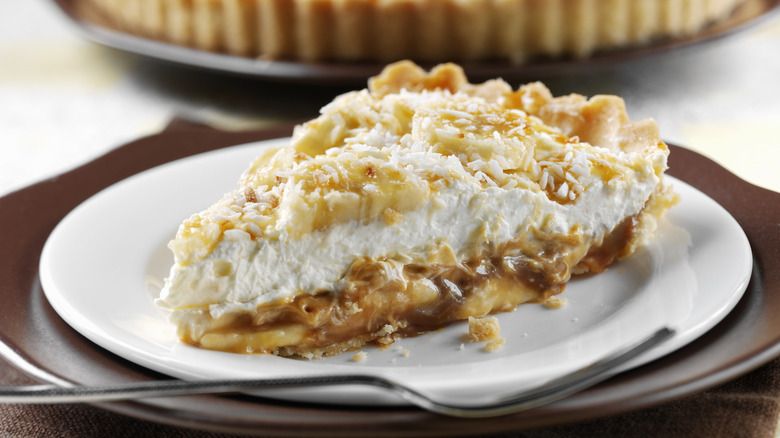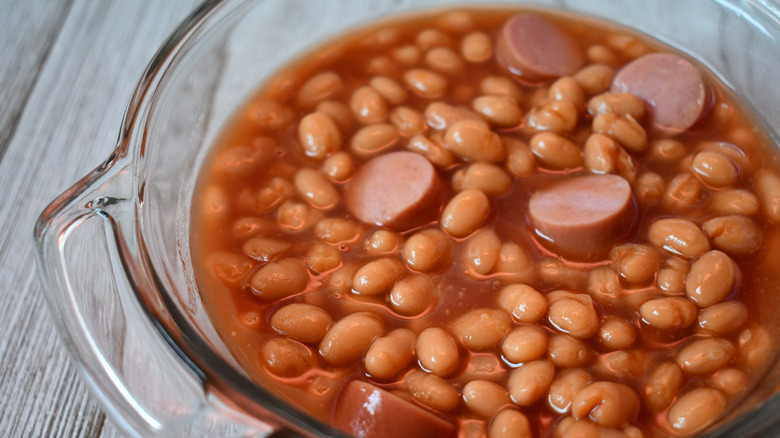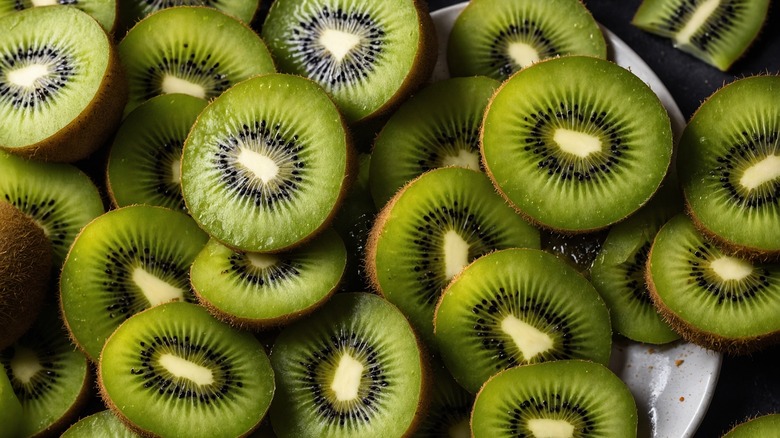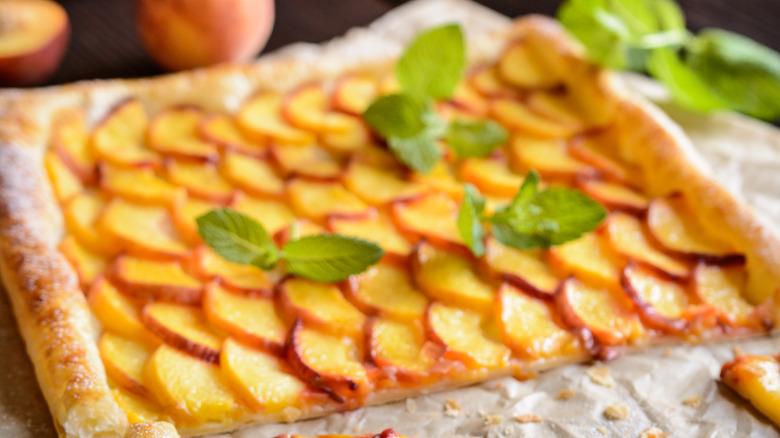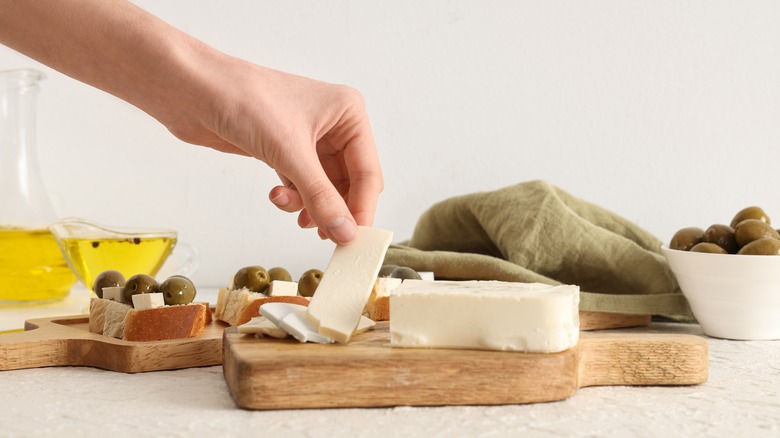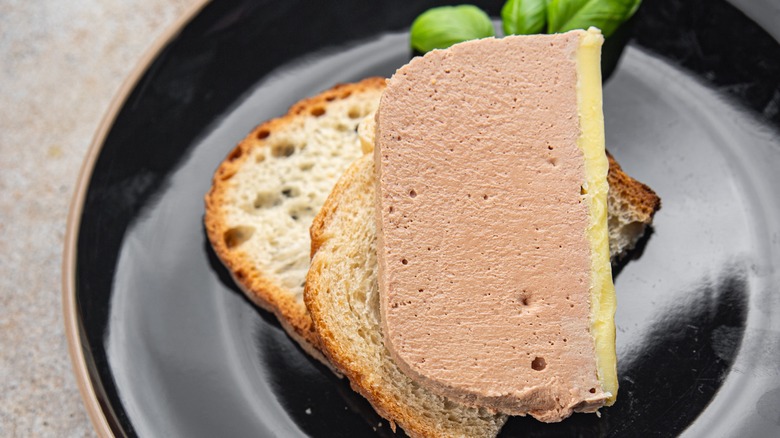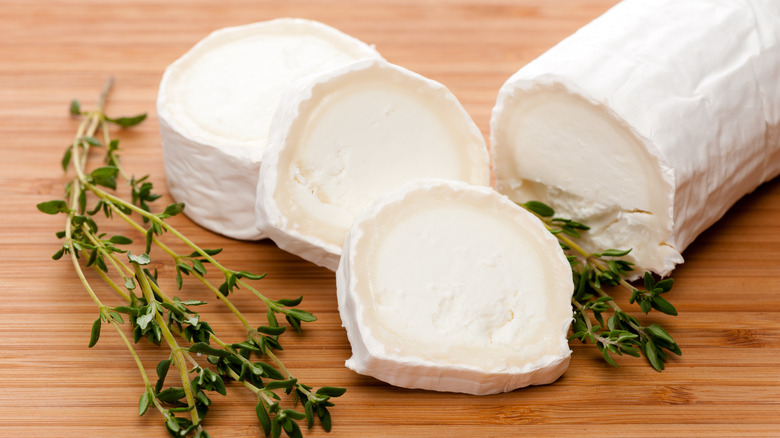14 Other Foods You Can Cut With An Egg Slicer
If you watch chefs on television, you'll see that they talk a lot about how they source and use their ingredients. That's the fun part of the job, and it certainly helps sell the product. But as a trained chef and former restaurateur, I can tell you that running a kitchen is about more than the ingredients. Thinking about the equipment at your disposal, and how to get the most productivity from it, is also hugely important.
The stakes aren't as high for home cooks, but it's still worth thinking about ways to get the best from your kitchen tools. Well-known culinary figures like Alton Brown are known for avoiding single-purpose gadgets called kitchen unitaskers, though some of these tools are definitely worthwhile.
Here's the thing: it's only a single-purpose tool until you find other ways to use it. For example, consider the lowly egg slicer. You may only slice boiled eggs once or twice a month, but it can come in handy for lots of other uses. Here are 14 of them, to inspire your creativity.
1. Butter
Butter may not be the first thing you think of cutting with your egg slicer, but it's actually a surprisingly good candidate. At its simplest, the egg slicer is a brilliant way to make neat, consistent pats of butter for serving to guests or groups. Just cut a stick of butter to the right length for your cutter, press down, and you're done.
Those nice, even slices aren't just for appearances, either. If you're making a recipe that calls for the butter to be softened, cutting each stick into thin slices is a good way to speed up the process. Slices have a lot more surface area than an intact stick of butter, so they'll warm and soften faster. This is a hack that makes it easier to prepare croissants with softened butter.
If you take those pats of butter and return them to the slicer horizontally, you can quickly dice the stick into small fragments. That's a fast way to cut in the butter when you're making biscuits or a flaky pie crust recipe, and it's easier on your hands and wrists than using a pastry cutter. However you choose to prep butter with your egg slicer, just be sure to let it soften slightly first. If it's rock-hard from the fridge, you run the risk of breaking your egg slicer's wires.
2. Mushrooms
Another food that works beautifully in your egg slicer is mushrooms. While a few types of mushrooms are leathery, most of them have a texture that lends itself to slicing this way. They're firm, and make neat slices, but aren't dense enough to strain the wires.
Size and shape play a role in choosing which mushrooms are best-suited for this approach to slicing. Ordinary button mushrooms and creminis (aka baby portobellos) are an excellent fit. Larger portobellos and fresh porcini mushrooms can be cut to fit and then sliced. The resulting neat and consistent slices cook evenly, so they're ideal for stir-fried dishes, omelets, pizzas, or gourmet-quality sides like this white wine sautéed mushrooms recipe.
Not all mushrooms are ideal candidates. Shiitake mushrooms are leathery and won't cut well in an egg slicer, and this is also the case with many dried mushrooms after they're rehydrated. Morels are brittle, and are better just halved or quartered with a knife. Chanterelles can be sliced lengthwise with your cutter, but like morels they're better when simply halved or quartered. Still, ordinary button mushrooms are what most of us use most of the time, and the egg slicer works beautifully for those.
3. Firm tofu
One of the great things about tofu is its versatility. That applies both to its chameleon-like ability to absorb flavors from its surrounding ingredients, and its usefulness in sizes and shapes ranging from thick slabs to thin slices or even noodles.
Firm tofu typically comes in rectangular blocks that resemble a pound of butter, which of course are too large to fit into an egg slicer. But if you take a cue from butter, and cut it lengthwise into quarters, those quarters are just the right size for slicing this way. Cut them to a length that fits your egg slicer, lower the wires, and boom! There are your tofu slices.
These thin, square slices are just the right size for marinating, incorporating into your favorite stir-fried dishes and soups, or crafting homemade versions of takeout restaurant favorites like mapo tofu. If you utilize the simple trick for ultra-crispy tofu, and sprinkle the slices with your favorite seasonings, these little pieces even make a great savory snack while you're sitting in front of the TV.
4. Avocados
Any food that you intend to put into your egg slicer needs to be reasonably soft. Raw carrots or sweet potatoes, for example, are out of the question. So when you think of naturally soft foods, one of the first ones that comes to mind will probably be avocados.
Small avocados are often just the right size for an egg slicer. All you need to do is remove the pit, scoop the flesh from the skin with a spoon, and put the halved avocado in your slicer. One press later, and you're ready to use the slices for avocado toast, wraps, salads (my own preferred use for avocados), or anything else you like.
Larger avocados will usually fit your egg slicer if they're halved and scooped, then cut crosswise into quarters. The slices you get from this technique aren't long and beautiful, but they're a great time-saver when you're making an avocado chicken salad. This method is also handy if, like me, you prefer a chunky guacamole to a smooth one. I've used an egg slicer to dice avocados quickly for a big bowl of guac, and it works well. The hack to dice avocado quickly with a cooling rack is faster if you need a large quantity of this creamy ingredient, but an egg slicer gives you a finer dice, and it's easier to clean.
5. Boiled potatoes
A lot of vegetables that would be too hard for an egg slicer to tackle when they're raw become prime candidates for this technique once they're cooked. A good example is potatoes.
Among all the types of potatoes, I'm a big fan of fingerlings and other waxy potatoes. One thing these have in common is that they'll usually fit neatly into your egg slicer (though you may need to halve some of the larger ones). The thin skins on these tiny potatoes are no problem for an egg slicer, so you can get the full benefit of their range of colors when you're assembling a fingerling potato salad.
There are plenty of other uses for beautifully even coin-shaped potato slices. You can use them for home fries, for roasting, or for deep-frying to make what we called "silver dollar fries" when I was a kid. You can even top them with smoked salmon and a frond of dill to serve as an appetizer.
6. Fresh mozzarella
As I write this, late-summer tomatoes are still growing in my garden. Vine-ripened tomatoes are one of the best things about summer, and I always try growing a couple of heirloom tomato varieties to see whether they'll come to fruition in my cool climate. They're sometimes finicky, but the flavor is worth it when I succeed.
There are few lunches I enjoy more on a warm day than a Caprese salad, made with tomatoes and basil from my garden along with slices of fresh mozzarella. The key to making it look really professional is slicing the cheese and tomatoes to an even thickness, which isn't easy with either ingredient. Dead-ripe tomatoes need a delicate hand and the right knife, while fresh mozzarella is squishy and tends to deform as you press down on it with the blade.
An egg slicer is the perfect implement for cutting small- to mid-sized balls of fresh mozzarella for a Caprese or a Neapolitan-style pizza. It's especially good if you make a miniature appetizer-sized version of the Caprese, with sliced grape or cherry tomatoes and bocconcini (small mozzarella balls) sliced to match. Sadly, this technique won't work with larger balls of fresh mozzarella unless you halve or quarter them first, which spoils the look of the salad. My tip for those is to use a loop of thread or dental floss to make neat slices instead.
7. Strawberries
Depending where you live, strawberries may be one of spring's delights, or the first thing you look forward to in early summer. I usually eat the first local berries fresh, just as they are, to enjoy the difference between them and the relatively bland ones from the supermarket.
Most of the time, though, when I use strawberries, they're sliced. As a former professional chef, my knife skills are good and I'm a fast worker, but it still takes a while to slice enough berries for a batch of jam or a enough shortcakes to feed the extended family. I find the process goes much faster when I break out an egg slicer (or more than one, if the grandkids want to help).
You'll need to remove the green leaves and core first. I usually use a tomato huller for that (like a tiny melon baller, but with teeth), but a paring knife works too. Once the berries are cored, you can cut them in the egg slicer at a tremendous rate. I usually put mine on a sheet pan, where I can press down on the slicer and quickly shake the slices off. Then I'll transfer them to a bowl once the sheet is filled. The slices are ready to use in pies, tarts and fruit salads, or on shortcakes, waffles, and regular or baked French toast. It's a great time-saver.
8. Bananas
Bananas are another contender when answering the question, "what's the first thing that comes to mind when you think of soft foods?" Even infants can happily gnaw on a banana with their toothless gums, which is why they're one of the first fruits most of us learn to eat.
Like eggs and avocados, bananas are a slam-dunk choice for cutting with an egg slicer. This isn't because they're hard to slice by other means (they're not), but because this way you'll get perfectly consistent slices, and get them quickly. That may not matter when you're just cutting up a few pieces for a tiny tot to practice their fine motor skills, but it certainly does make a difference for culinary purposes.
If you're making a banana cream pie or a fruit salad, for example, consistent slices make the difference between an outcome that looks neat and professional, and one that looks rushed and haphazard. Bananas work well in an egg slicer at any stage of ripeness that includes some yellow on the peel. An egg slicer works for ripe plantains as well, but this might be a struggle with green ones.
9. Hot dogs
Surprisingly, there are a few meats that also work well when cut in an egg slicer. One example is hot dogs, which — unlike many sausages — lack a tough casing that might pose problems for the slicer's wires.
Fortuitously, hot dogs are also one of the few meats that you're likely to want to cut into thin, coin-shaped slices. Many kids will never say no to a bowl of baked beans with hot dogs. A slicer makes it easy to crank out neat slices for beanie weenies, or when preparing other kid-friendly favorites like canned pasta or a box of instant mac and cheese.
More importantly, the egg slicer offers a way for you to get the little ones involved in preparing their own lunches. Even youngsters too small to safely handle a knife can cut a wiener in your egg slicer, and they'll do so with glee. That frees up your hands and attention for other tasks, like heating the beans or boiling the water for your mac and cheese. It's a fair division of labor, and a good opportunity to start kids on a path to developing real cooking skills.
10. Kiwis
Nowadays it's hard to remember how exotic kiwi fruit seemed a few decades ago. I remember looking at my first kiwi in silent confusion, wondering whether I needed to peel it before eating it, and then debating about if the white core was edible.
Kiwis aren't strange or novel anymore, but slices of kiwi remain a strikingly beautiful addition to desserts, baked goods, and fruit salads. As with many other ingredients, they look most impressive when they're evenly sliced, which is harder to do consistently than you'd think (just ask any chef who's overseen a team of prep cooks). An egg slicer solves this problem neatly and quickly, turning out perfect slices as fast as you can pop in the next kiwi fruit. You can even slice right through the skin if you like, though if the kiwis are really ripe I find this can mush up the fruit a bit.
The egg slicer is a great convenience when you're churning out kiwis in volume for a fruit salad, or something like this seasonal fruit tart recipe. Another unusual option is making kiwi chips in an air fryer — you'll really appreciate those perfectly even slices for that. Each kiwi piece will dry to the same level of doneness at the same time, depending on the limitations of your air fryer.
11. Ripe stone fruit
Some kinds of produce, like winter squashes or sweet potatoes, are difficult to slice neatly because they're so hard. Other produce is difficult to cut because it's slippery and hard to hold onto, like peaches, nectarines, and apricots.
For those stone fruits — and others like plums or even cherries — an egg slicer can provide great convenience when you want to cut them into flat slices rather than wedges for baking, cooking, or drying. Slicing slippery, squishy halves of peeled peaches or plums with a sharp knife puts your fingertips in jeopardy, but an egg slicer makes this task routine. You'll just need to trim the sides of larger fruits (which, remember, wouldn't have made neat slices anyway) so they'll fit.
This is a fast way to slice ripe peaches, plums, or nectarines in bulk for drying or jam-making, or as a garnish for your favorite desserts. In the case of pitted cherries, dropping them by the handful onto your egg slicer is a less-messy way of chopping them for use in sauces or baked goods (though you'll still want to wear an apron to protect your clothes).
12. Feta
Soft, fresh mozzarella is a perfect choice for using with the egg slicer, but this tool is good for other cheeses, too. One that really works well is feta, which, like tofu, is often sold in a rectangular block.
Here, as with tofu, you'll want to start by cutting the block of feta into lengthwise quarters that resemble sticks of butter. Cut those sticks to the right length for your slicer, and in just seconds you can turn out stacks of slices that are ready to be used in your favorite recipe.
Feta's pure-white color makes it a superb addition to most salads, where it provides a pleasing visual contrast with dark-colored lettuces, sweet peppers, and other colorful veggies — especially black olives. I'm a big fan of simple feta and watermelon salads, where these slices make a great alternative to crumbled feta (which tends to turn to mush in the melon juices) or big chunks. With neat slices, you get just the right amount of pungent feta in each mouthful. You could even use them to make appetizer- or snack-sized versions of a watermelon and feta tea sandwich.
13. Pâté
During long summer evenings, I'm fond of skipping a big meal in favor of a platter of small bites. At my house, we call that having a "nosh night." I'll usually include a few kinds of deli meats, some cheeses, a mix of bread and crackers, and — invariably — some pâté.
When it's just the two of us, I'm perfectly fine with serving the pâté all in one piece and just cutting off a portion when I want it. But when serving guests, I like to make up canapés or appetizers instead, with the pâté sliced uniformly and decorated with one or another suitable garnish. Pâté is inconveniently soft to slice, which is why scooping is the low-effort option — but your egg slicer makes slicing pâté a practical alternative.
For the easiest slicing, your pâté should be very cold. Cut your slab of pâté into oblong strips with a thin, sharp knife, then cut each strip with the egg slicer. Using a fork or the tip of a knife, transfer each slice immediately to a cracker, wedge of toast, or another suitable base before the pâté warms up and softens. The neat slices look very professional, and people will think you have wonderful knife skills.
14. Goat cheese
Any ideal food for cutting on an egg slicer would be about the same diameter as a boiled egg, and soft enough for the slicer's wires to pass through it evenly. That's a pretty good description of goat cheese, which is usually sold in a small log.
Of course, goat cheese isn't hard to slice with a knife, but getting neat, consistent slices can be a challenge, precisely because it's so soft. The easy answer is cutting your log of goat cheese into halves or thirds (depending on its size) and then cutting those segments with your egg slicer.
The end result is a stack of neat little coins of strikingly white goat cheese. They're ready to use in numerous goat cheese recipes, being just right for topping appetizers, salads, pizzas, and more. Their pure-white color makes them an especially good backdrop for bold-colored garnishes, from dark-green herbs to jewel-like pomegranate arils.
